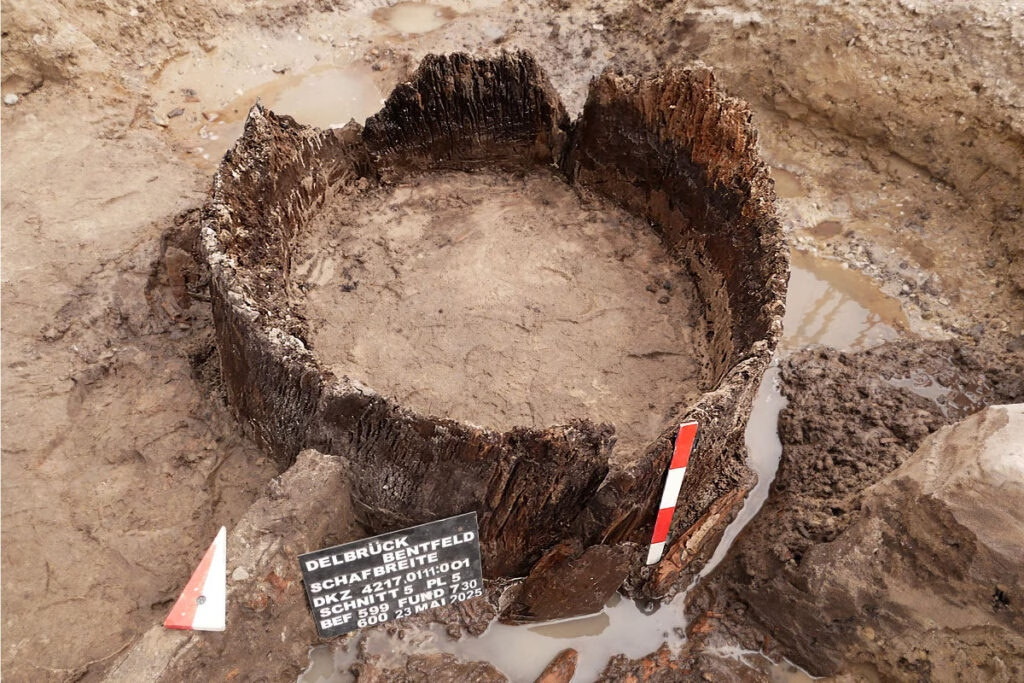A mysterious 1,600-year-old burial site from the Roman era has been uncovered in Delbrück-Bentfeld, Germany, shedding new light on the deep cultural ties between the Roman Empire and local Germanic tribes. Archaeologists say the discovery could offer rare insights into the life and death of a warrior who may have served in the Roman army.
Led by the Westphalia-Lippe Regional Association (LWL), the excavation revealed the cremated remains of a man buried alongside Roman military artifacts. The grave, hidden among roughly 400 archaeological features at the site, included a spearhead, ornate brooches, a broken bone comb, fire steel, and a decorative animal-headed belt buckle — believed to be part of a Roman soldier’s uniform.

A Germanic Warrior in Roman Service?
The unique combination of grave goods suggests the individual may have been a Germanic warrior who served within Roman ranks. Archaeological director Sven Knippschild noted, “This find is exceptional. It not only confirms military ties between the local populations and Rome but also shows how deeply intertwined these cultures were during Late Antiquity.”
This is the first time such well-preserved military items have been found in situ in the East Westphalia region, rather than as scattered surface finds.
A Forgotten Well Full of Clues
Next to the grave, archaeologists also discovered a seemingly ordinary structure—initially thought to be an animal watering hole. However, further analysis revealed it to be a deep, timber-lined well carved from tree trunks and containing remarkably preserved organic materials: fragments of leather, woven wood, and even a delicate insect wing.

One beam had a rune-like inscription, suggesting it may have been repurposed from an older building. The well was filled with a charcoal-rich layer, which included burned bones, glass beads, and ceremonial artifacts — possibly evidence of a ritual cremation or symbolic closure of the well itself.
Among the glass finds were a large green bead and two smaller ones — one clear and one blue — likely remnants of a hastily or symbolically performed ritual fire.
Scientific Analysis Underway
The site is now the focus of intense scientific investigation. Radiocarbon dating, dendrochronology (tree-ring dating), anthropological assessments, and archaeobotanical studies aim to reconstruct the burial’s historical context and environmental conditions over 1,600 years ago.

The excavation took place ahead of a new residential development in the Schafbreite area. Now that the fieldwork is complete, construction is expected to resume — but local officials stress the importance of preserving history even as they build for the future.
Delbrück Mayor Werner Peitz remarked, “We are proud of both the progress on our housing project and the extraordinary archaeological work done here. This discovery adds a vital chapter to our regional history — and we are committed to protecting and sharing it.”
Westphalia-Lippe Regional Association (LWL)
Cover Image Credit: Recovery of structural timbers from the well shaft. EggensteinExca/S. Knippschild





